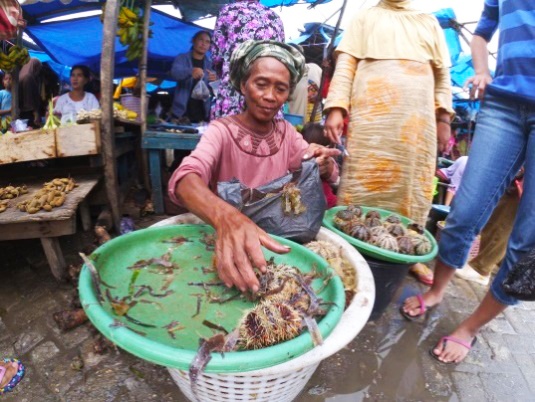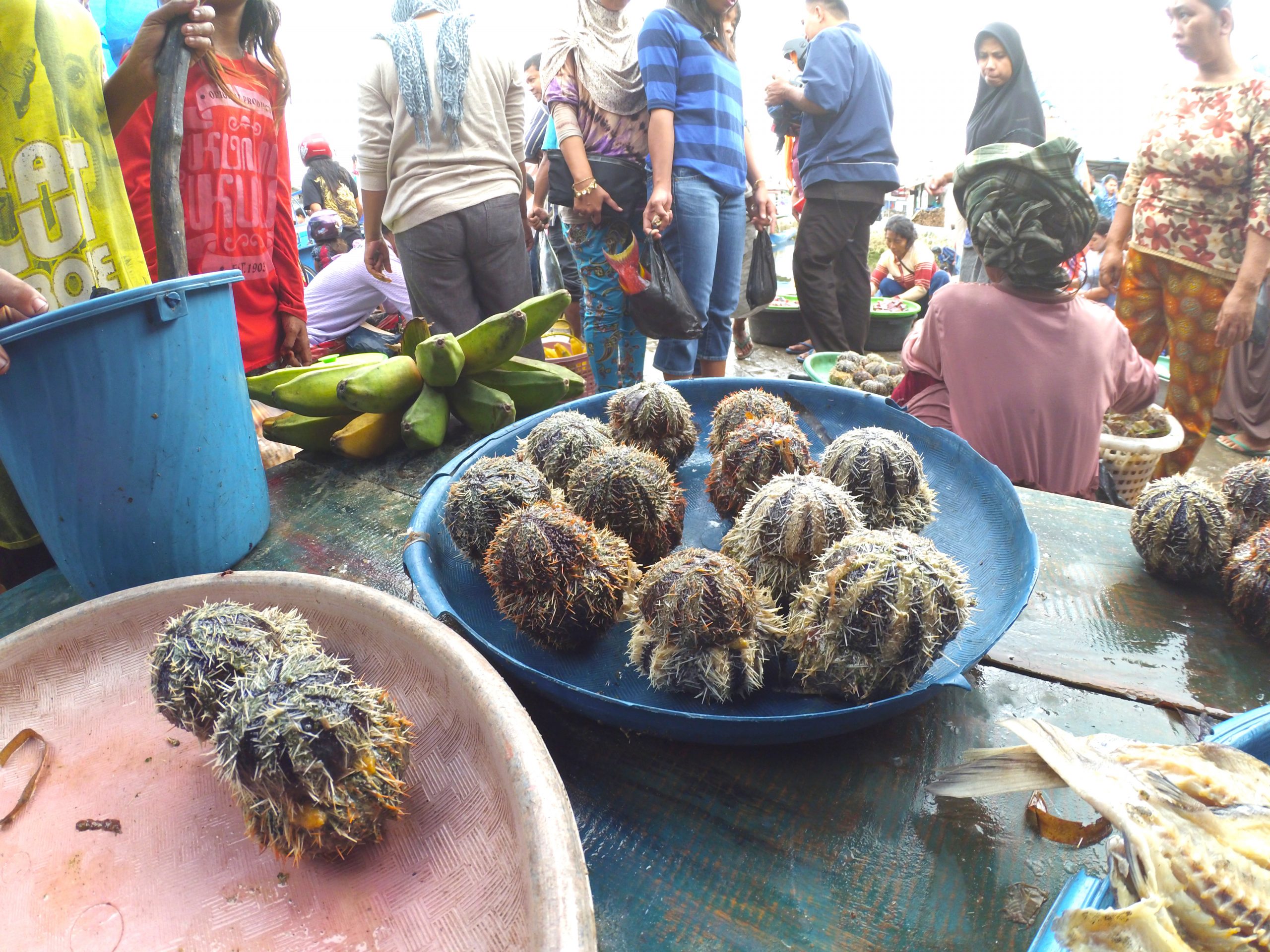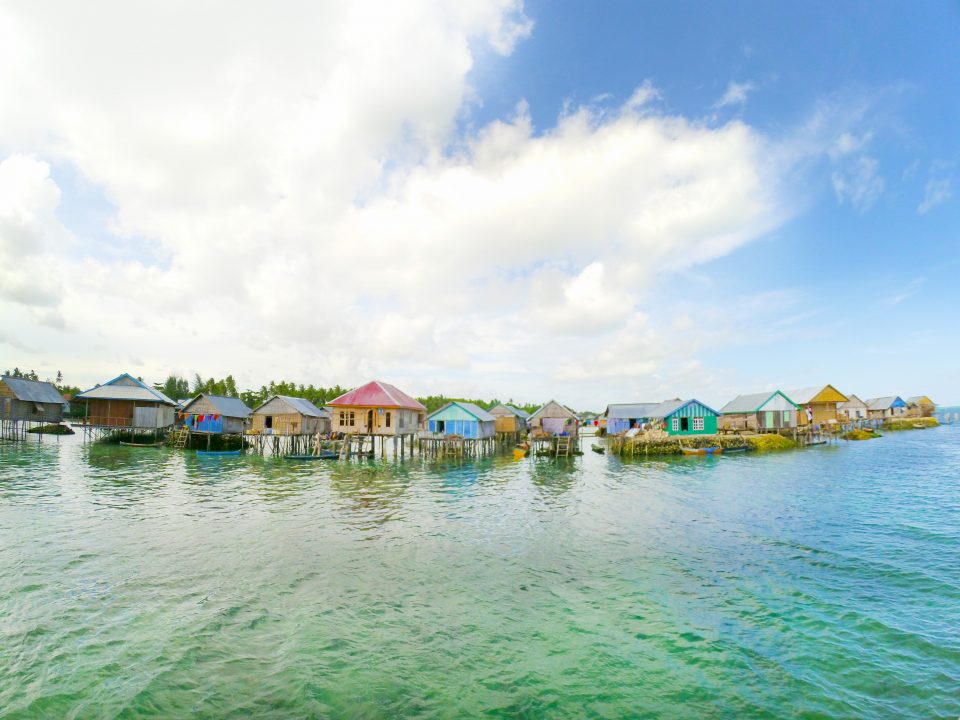Indonesia has many ethnic groups with a very strong cultural tradition. One such community is the Bajo tribe whose members used to live nomadically on boats.
They lived and moved around in family groups on boats called “soppe.” Boats for the Bajo tribe were like home and were a very valuable main necessity. All activities were carried out on the boats, ranging from eating, sleeping, performing religious rituals, playing (for children) and even giving birth. The people settled near the shore only in certain seasons when the water was calm while repairing boats and fishing equipment, or while conducting social activities such as marriage, circumcision, burial, and other ceremonies.
The life of the Bajo people long ago was marked by settlement patterns that began in several areas of the archipelago, by setting up houses on stilts in the coastal waters. Currently, Bajo tribal settlements in the waters of Wakatobi Islands constitute one of the largest populations of Bajo tribes in the archipelago; these settlements are spread over several islands, such as Wangi-Wangi Island, Kaledupa, and Tomia. The population of the Bajo tribe in Wakatobi Islands is 9,282 people living in several villages. From data of the Central Body of Statistics or Badan Pusat Statistik (BPS), Mola village located in Wangi-Wangi Selatan sub-district is the biggest village of the Wakatobi Bajo tribe community, inhabited by 68.55 percent of Bajo tribespeople with a population of 6,363.
Bajo is a tribe distributed widely around the world, including Indonesia (Sulawesi, Papua, Nusa Tenggara), the Philippines, Malaysia, and even Africa. Despite being separated by great distances, Bajo tribes around the world have the same way of life and the same culture, including the same language.
Bajo Traditional Medications There are several types of traditional medications used by Bajo people, namely Kaka, Tuli, Kutta, and Kadilaok Kadara and Duata. At the beginning of the medication process, the sanro (medication shaman) will touch the body parts of the patient, such as the soles of the feet, ears, and head, to determine the type of medication to be applied. This determination becomes the sanro’s special privilege, as the sanro is considered to be the most knowledgeable about the sick.
Menyuluh
One of the activities usually engaged in at night by Bajo people is menyuluh, which is marine spear fishing. It is called menyuluh because being a night-time activity it is usually done with the aid of a flashlight (suluh), starting at sunset and lasting for about three hours.
Bedak Pupur
This is a powder commonly used by members of the Bajo community and often by the women. It is known as a cooling powder which can protect the user from the heat of the sun and is said to be able to remove sweat as well as acne.
Traditional Boat of Bajo
There are several typesof traditional boat used by the Bajo people, including dalah body batang, lepakaloko, lepadibura, soppe, and lambok. Each boat has a distinctive shape and is used for different purposes. Traditional boats of Bajo are made of katali and kalimpapa wood. The boat-building process varies depending on the type of boat. Small boats are generally simpler and without special rituals. The big boats’ manufacturing process, however, is quite complicated and requires special rituals, for example reading a prayer during the installation of buds and so forth.
Meti
Meti is a word in Bajo that means to recede. When the seawater is receding, the Bajo tribe uses it to menyuluh and search for tetehe (sea urchins). Meti can also be interpreted as a search for tetehe activity when the sea is receding. In the sea around the Bajo villages (normally 20–50 cm deep), it is easy to find tetehe spread among the marine plants. Sea cucumbers and small to large starfish will be a variation in the search. Bajo people are accustomed to eating raw seafood such as fish, sea cucumbers, squid, octopus, and sea urchins. They just clean up the dirty parts, remove the inedible parts and eat the seafood meat as it is without being cooked. Sometimes fish is flavoured with lime and soy sauce only.
Carumeng
As the Bajo’s traditional swimming goggles, carumeng are also called glass mirrors. Bajo people usually use carumeng to swim, especially when they menyuluh. The shape is unique because the frame is made of wood that is shaped in such a way as to fit the contour of the user’s eyes. The frame is then equipped with a glass mirror glued to the frame so it will not be impregnated by water. Finally, the rubber is connected at the two ends of the wooden frame.
How to Get to Wakatobi
If you want to know and enjoy the local life of the Bajo tribe, you can visit Wakatobi. To get to Wakatobi, travel can be by air and sea. Travel via airplane can be done through big cities with transit at Kendari Haluoleo Airport. It takes 50 minutes from there to Wangi-Wangi island, the capital of Wakatobi. While the sea route can be used as an alternative to minimise your budget, you can go to Makassar by plane as the sea route starts from Makassar to Wakatobi by boarding the PELNI ship heading to Baubau. Then, you can continue from Baubau to Wakatobi by using a wooden boat which operates every night.
Once in Wangi-Wangi, you can go to Mola village in southern Wangi-Wangi. In the village of Mola, there is already a Bajo Lepa Mola (Mola Tourism Board) organisation that organises village tourism. Lepa Mola is a social enterprise aimed at managing local tourism. If you want to visit a Bajo village on the sea, you can go to Kaledupa Island. There you can explore the local life of the Bajo tribe by taking part in menyuluh activities, trying to use bedakpupur, eating traditional food of the Bajo tribe, swimming with carumeng, and staying overnight at a home on the sea owned by local residents.




